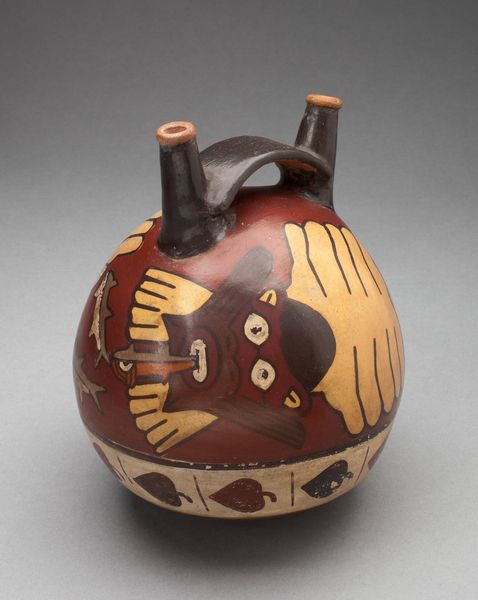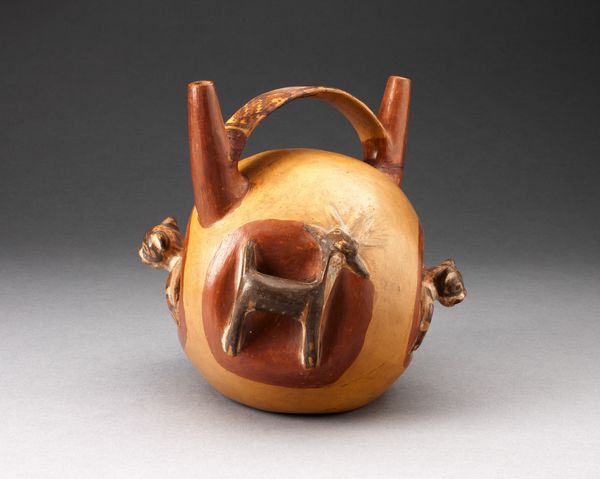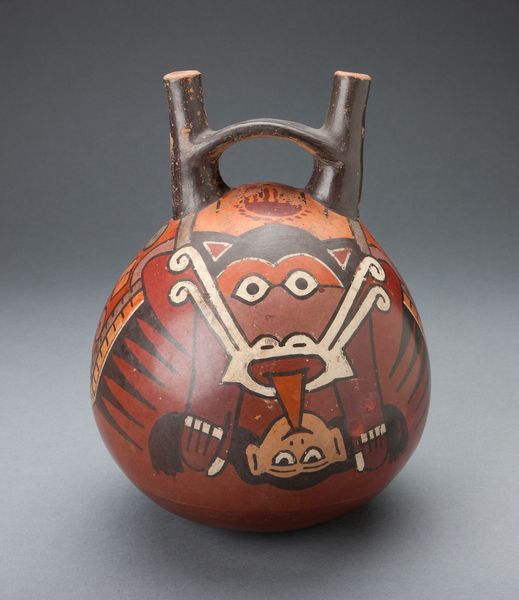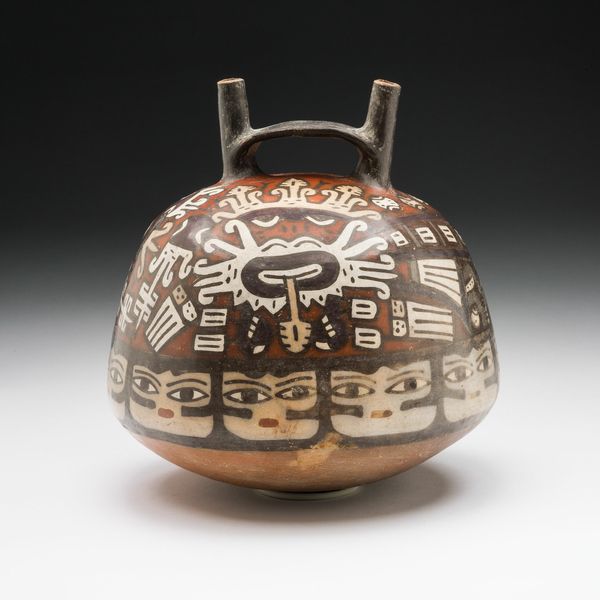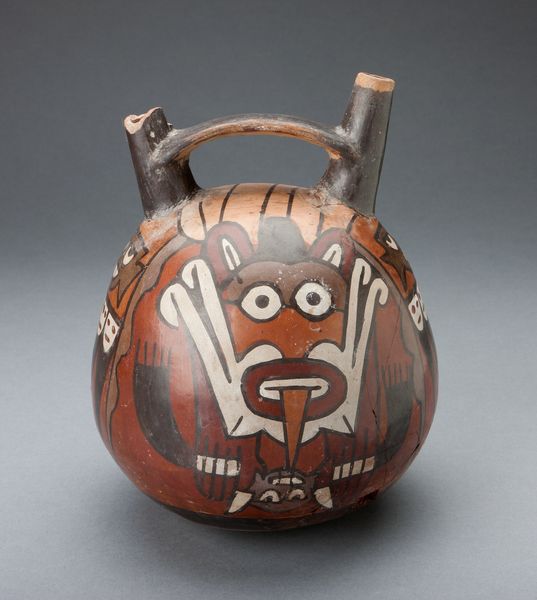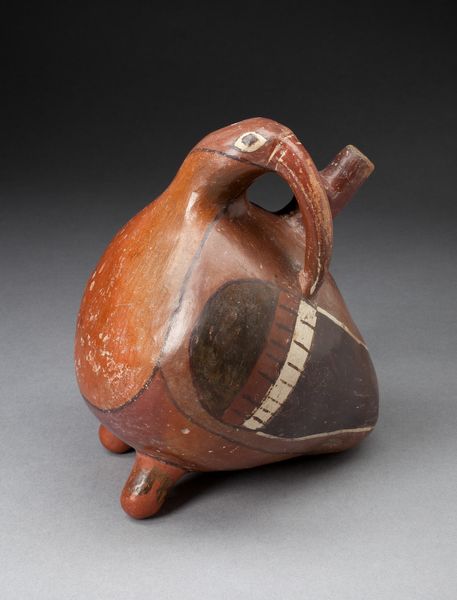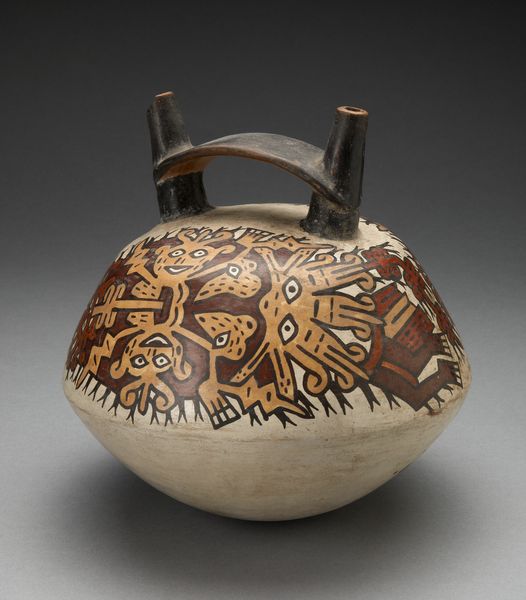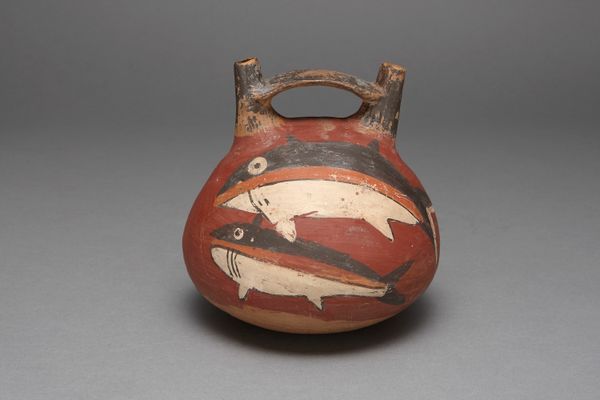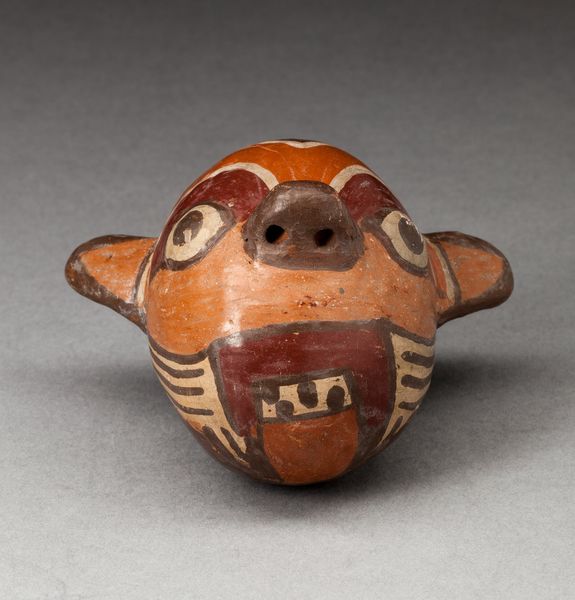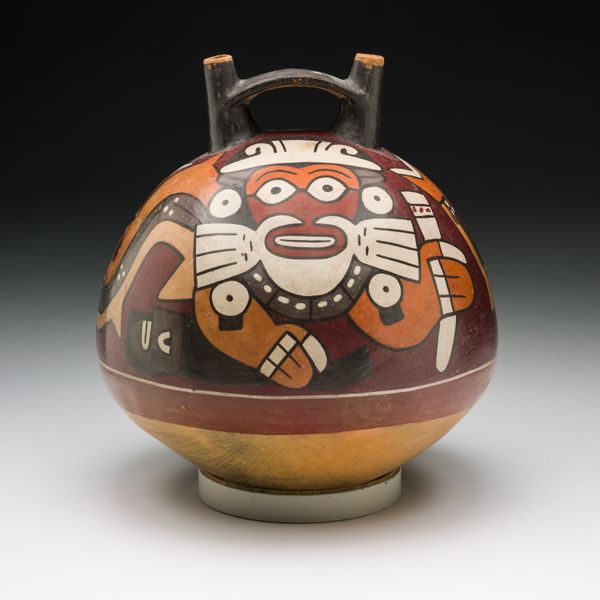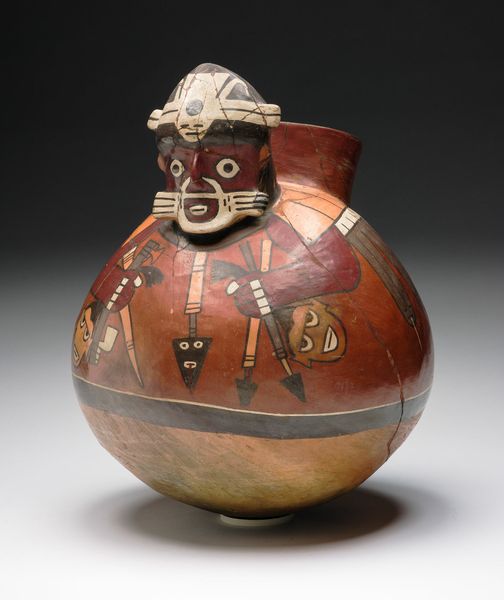
ceramic, terracotta
#
portrait
#
ceramic
#
figuration
#
terracotta
#
indigenous-americas
Dimensions: 15.2 × 18.9 cm (6 × 7 7/16 in.)
Copyright: Public Domain
Editor: This ceramic bottle, crafted by the Nazca people between 180 and 500 AD, is shaped like a severed trophy head. There's something unsettling, yet undeniably compelling about its stylized features. How do we interpret this fusion of artistry and what appears to be a representation of violence? Curator: The term "trophy head" can be jarring, but it's crucial to unpack the power dynamics at play. In Nazca society, such depictions likely weren't simple trophies of war. Instead, consider how ancestral veneration, ritual practice, and social status might intertwine. Do you notice the careful attention to detail, the symmetry, the... dignity, almost? It suggests more than conquest; it indicates transformation, perhaps even regeneration. Editor: Regeneration? Could you elaborate? I mean, it's hard to see past the idea of decapitation. Curator: Absolutely. Think about the life cycle, the cyclical nature of agriculture, and even death as a necessary stage for renewal. Decapitation, in this context, could symbolize the capturing of vital energy. The head, as the seat of power and knowledge, becomes a source of continued strength for the captor, integrated into their own lineage. Also, how might indigenous perspectives challenge our modern understanding of violence? Editor: That shifts the perspective entirely. Viewing it as an acquisition of power through transformation makes it less gruesome and more… ritualistic. The geometric patterns framing the face, the bottle's function as a vessel – it all hints at deeper symbolic layers than just a head on display. Curator: Exactly! The bottle form itself is significant. Liquid, often associated with lifeblood or sacred offerings, flows *through* this potent image, further reinforcing the ideas of transference and continuation. It asks us to challenge our own cultural biases when interpreting indigenous artifacts. Editor: I hadn't considered the life cycle implications, nor how my own preconceived notions colored my perception. Curator: These objects serve as powerful reminders to constantly interrogate our own assumptions and listen to voices beyond our own historical framework. There is always something more that is beyond our knowledge that we can explore. Editor: Absolutely! This deeper exploration unveils that this is not only art but a lesson on cultural empathy and constant learning.
Comments
No comments
Be the first to comment and join the conversation on the ultimate creative platform.
